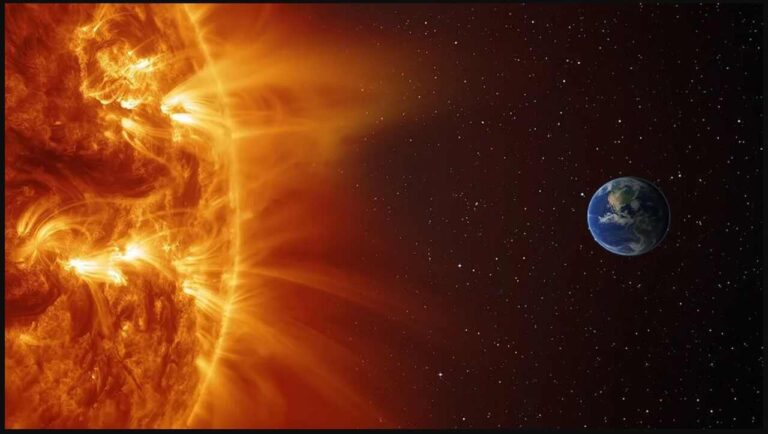Solar flare erupted from the Sun, Earth was saved from getting hit, blackout occurred in half the world, did you feel it?

Once again there has been a solar explosion from the Sun, the video of which was captured by NASA through telescope. Scientists say this is the first solar eruption of the year 2024, which caused radio blackouts in many parts of the world on Friday.
The explosion occurred on February 9 at around 8:10 am, but fortunately the Earth was saved from being hit by it, because the Earth was not in the direct firing line of this solar flare, but due to this solar flare, the entire South America , Shortwave radio communications were disrupted in Africa and the South Atlantic.
X3.3 Solar Flare | Full Analysis & Forecast
Learn about solar activity and space weather: https://t.co/cmrMaMmvki pic.twitter.com/FrfhMz7MZo
— SpaceWeatherNews (@SunWeatherMan) February 9, 2024
Earth survived due to Sunspot moving ahead of the Sun
According to media reports, the solar flare erupted from sunspot AR3576. This sunspot was formed with an M category solar flare and plasma explosion on February 5, but this sunspot moved ahead of the Sun on February 8, putting the Earth out of the direct firing line of this sunspot.
Solar physicist Keith Strong wrote in a post on his It would create disturbances in the Earth and cause geomagnetic storms, which would affect the orbit of Earth’s satellites.
Biggest #SolarFlare of the solar cycle? Measuring in at a X3.38-class, today’s flare clocks in about 32% smaller than the NYE X5 event. So how can it be the biggest? Well, a significant proportion (>32%?) of the emission is hidden behind the edge of the Sun! #spaceweather pic.twitter.com/Za296ieXme
— Dr. Ryan French (@RyanJFrench) February 9, 2024
Solar radiations reach earth in 8 minutes
According to scientists, the sunspot is currently in the southern part of the Sun, so it is unlikely that any CME from sunspot AR3576 will directly strike the Earth. It is more likely to pass under the earth. Of course we may not be in the direct firing line of a solar flare, but that doesn’t mean we won’t be affected.
The rapid pulse of X-rays and extreme ultraviolet radiation directed toward Earth at the time of the explosion caused a radio blackout. Solar radiations traveling at the speed of light reached the Earth in just 8 minutes and collided with the thermosphere, the upper layer of the Earth’s atmosphere, disrupting radio communications in that part of the sunlit area.
Sun reaches high point of 11-year solar cycle
According to scientists, the Sun is completing its 11-year solar cycle and it is blazing incredibly. It is at the highest point of its 11-year solar cycle. Solar flares are continuously erupting in it, which collide with each other and form sunspots. On February 8, one such sunspot formed in the direct direction of the Earth, but in a cyclical manner it moved out of the Earth’s line within a few hours.
This sunspot was seen from the Perseverance Rover on the surface of Mars. Solar flares are divided into categories according to their size. X-class are the most powerful solar flares, which can cause significant damage. Then there are M-class flares, which are 10 times smaller than X-class flares. This is followed by C-class, B-class and finally A-class flares, which affect the Earth less.







